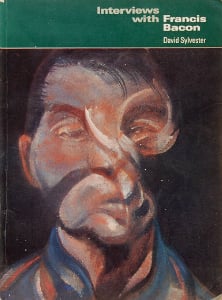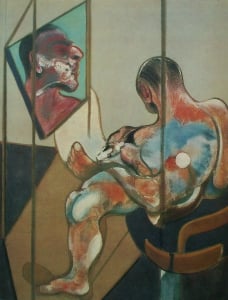It can be a horrible thing to acquaint yourself with artists you admire. As a rule, I would advise against it. The passionate vocalist will sigh and check their e-mail on their smart-phone, the comedian will be devoid of joy and make obvious excuses to get rid of you, the sculptor will shrug off a meticulous work by saying they can’t bear to think about it anymore. Then, sometimes, you become friends with them, and you wind up forgetting they’re an artist… until you see them pick up a brush, and you don’t know what to think. Thank heavens, then, for documentaries and their ostensibly objective gaze. Course, the focus of this week’s Outside-in cinema film, Francis Bacon, if anecdotal evidence is anything to go by, was probably unlikely to befriend you.
That said, there’s still this strong, entirely understandable urge to get to know the guy. Unsurprisingly, there’s plenty of ways to join the dots, fill in the gaps, and add another line on the wall in your overall understanding of his complex mind via the collection here. David Sylvester’s collection of interviews, for example, stretching from 1962-74, is a good, non-editorialised compilation of the thoughts that Francis chose to shoot out into the ether, and is also a good place to get a sense of the man without the distraction of biographical grandeur.
I hate to think, sometimes, what a stranger would think of me if I were to disappear one day, and all that’s left to decipher my life via would be by the studio space I use. There’s little order, and it’s hard to imagine me relaxing in that state. Well, that’s roughly what I read in the posthumous images of Bacon’s studio, as seen in the eponymous book, 7 Reece Mews. Course, he was frequently photographed in there, looking unfussed by the potential invasion, whereas I’ve never been photographed in my studio (I think). Maybe it’d do me some good.
Outside of queries into the man, there’s also plenty of examples of his work to pore through in a myriad of tomes in the stacks and on the shelves. For example, this catalogue from an early 1970s exhibition in Paris, showing many of his most famous works in lucious full-colour plates.
Plenty more will be on display during the screening.




